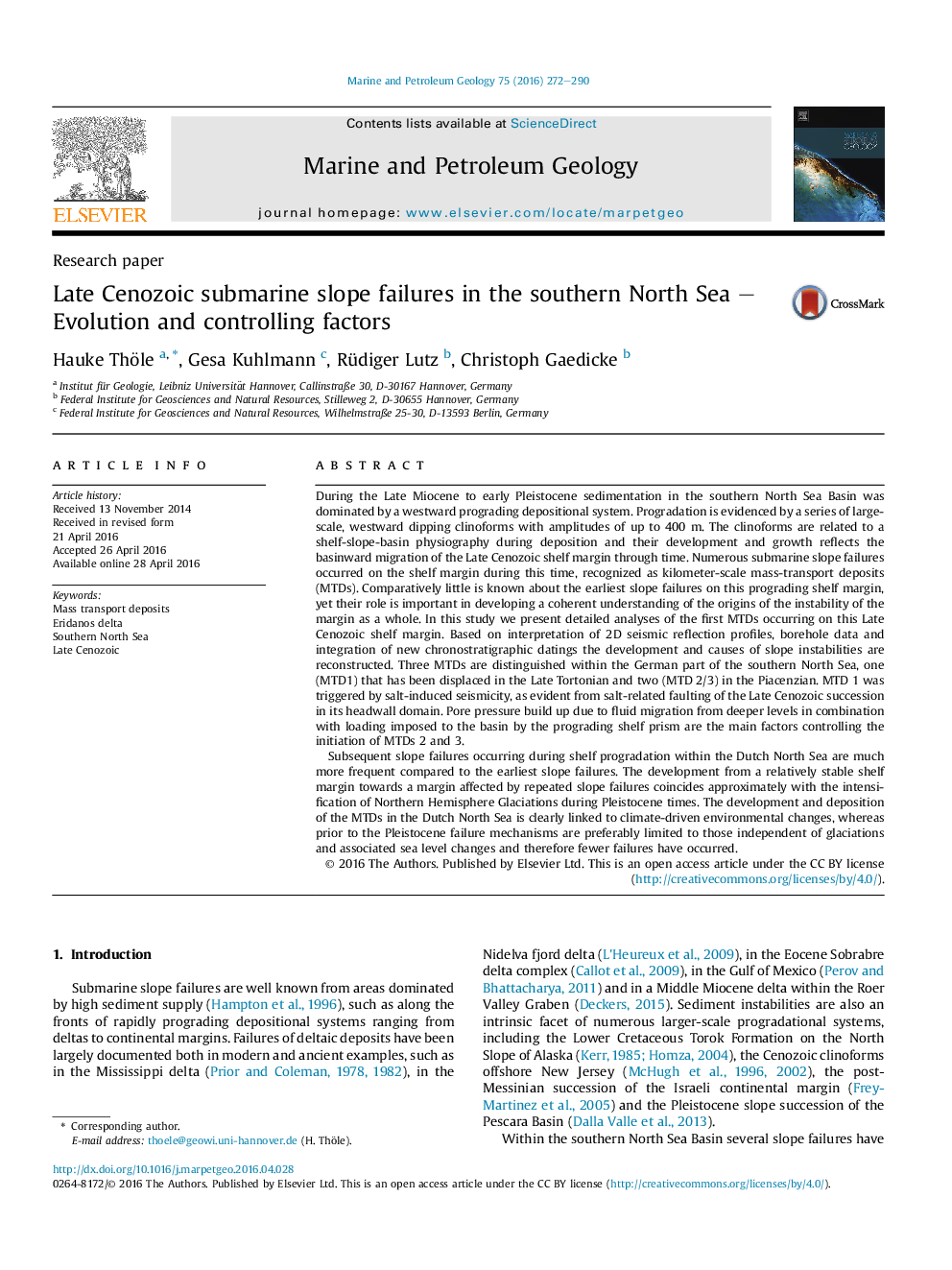| کد مقاله | کد نشریه | سال انتشار | مقاله انگلیسی | نسخه تمام متن |
|---|---|---|---|---|
| 6434361 | 1637152 | 2016 | 19 صفحه PDF | دانلود رایگان |

- Three Late Cenozoic MTDs in the area of the southern North Sea are described.
- The MTDs are caused by a combination of overpressure and salt tectonics.
- They are the earliest in a series of slope failures affecting the prograding margin.
- The prograding margin was more stable during Late Miocene and Pliocene times.
- After the Pliocene the recurrence rate of slope failures increased significantly.
During the Late Miocene to early Pleistocene sedimentation in the southern North Sea Basin was dominated by a westward prograding depositional system. Progradation is evidenced by a series of large-scale, westward dipping clinoforms with amplitudes of up to 400Â m. The clinoforms are related to a shelf-slope-basin physiography during deposition and their development and growth reflects the basinward migration of the Late Cenozoic shelf margin through time. Numerous submarine slope failures occurred on the shelf margin during this time, recognized as kilometer-scale mass-transport deposits (MTDs). Comparatively little is known about the earliest slope failures on this prograding shelf margin, yet their role is important in developing a coherent understanding of the origins of the instability of the margin as a whole. In this study we present detailed analyses of the first MTDs occurring on this Late Cenozoic shelf margin. Based on interpretation of 2D seismic reflection profiles, borehole data and integration of new chronostratigraphic datings the development and causes of slope instabilities are reconstructed. Three MTDs are distinguished within the German part of the southern North Sea, one (MTD1) that has been displaced in the Late Tortonian and two (MTD 2/3) in the Piacenzian. MTD 1 was triggered by salt-induced seismicity, as evident from salt-related faulting of the Late Cenozoic succession in its headwall domain. Pore pressure build up due to fluid migration from deeper levels in combination with loading imposed to the basin by the prograding shelf prism are the main factors controlling the initiation of MTDs 2 and 3.Subsequent slope failures occurring during shelf progradation within the Dutch North Sea are much more frequent compared to the earliest slope failures. The development from a relatively stable shelf margin towards a margin affected by repeated slope failures coincides approximately with the intensification of Northern Hemisphere Glaciations during Pleistocene times. The development and deposition of the MTDs in the Dutch North Sea is clearly linked to climate-driven environmental changes, whereas prior to the Pleistocene failure mechanisms are preferably limited to those independent of glaciations and associated sea level changes and therefore fewer failures have occurred.
Journal: Marine and Petroleum Geology - Volume 75, August 2016, Pages 272-290